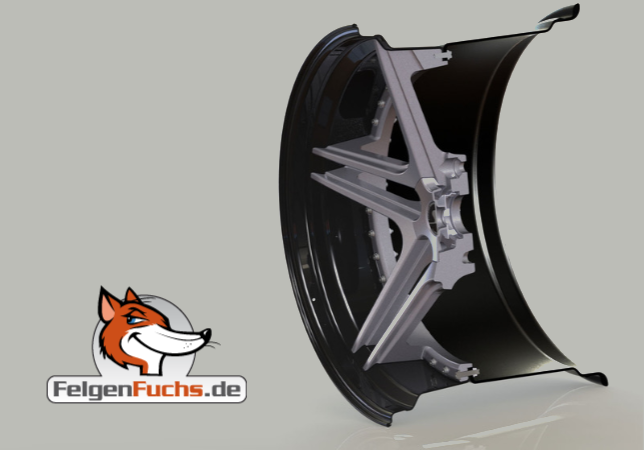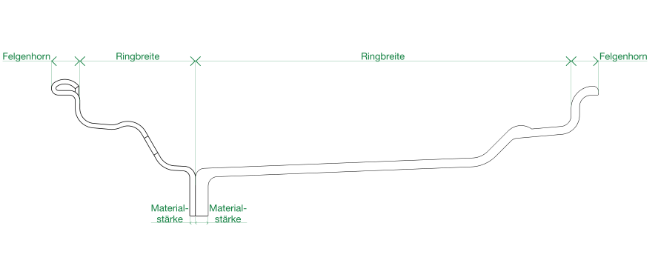
The lip is only a component of the wheel. To measure the wheel width correctly we need to understand how the wheel width is defined. On this page you will find the following answers:
Measure the wheel width correctly

The wheel width is measured from tire seat to tire seat. That is, without the rim horn! As long as the tire is mounted, an impossible task. It would be much more practical to measure the overall width of the wheel including both rim horns. But this is wrong! One can imagine: The rim width is important for the tire. And the tire sits inside the rim, in the rim width.
In practice, I usually measure the width of the rim over all. Now the rim flanges are each between 10 and 13mm thick. So I can subtract 20-26mm from my rim width and estimate the jaw width using this table:
| Width over all | Muzzle width | Rim width |
|---|---|---|
| 223-229mm | 8J | 203mm |
| 235-241mm | 8,5J | 215mm |
| 249-255mm | 9J | 229mm |
| 261-267mm | 9,5J | 241mm |
| 274-280mm | 10J | 254mm |
| 287-293mm | 10,5J | 267mm |
Measure lip size, material thickness and rim horn at a modular wheel

This sectional drawing shows the two dishes arranged to form a three-piece rim. The widths of the two barrels then result in the jaw width of the three-piece rim. As already described in the chapter on rim width, the rim flanges are not part of the ring width.
In practice, measuring the outer and inner rim beds is difficult. Especially if the wheel is still bolted or even a tire is still mounted. Often, only estimating helps. For this we need to know:
- a rim flange is 10-13mm thick.
- Aluminum rim rings are between 5.5mm and a maximum of 8mm thick. I calculate mostly with 6mm.
- Rim rings made of Radinox are much thinner. I calculate with 2mm.
- Most wheel manufacturers grade their rim beds in even ½" increments. Deviating from this standard, rim beds are also manufactured to 1.75" to 2.25" to 6.25" to 6.75" and so on. The difference between a 3.25" and a 3.5" wide rim bed is just 6mm!


